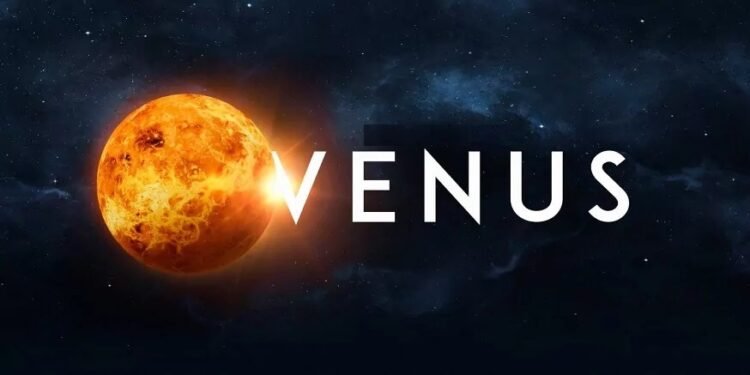Planet Venus: The Mysterious Twin of Earth

Venus, the second planet from the Sun, is often called Earth’s twin due to its similar size, mass, and composition. However, despite these similarities, Venus is an entirely different world with a harsh environment and extreme temperatures. Let’s explore the fascinating characteristics of this enigmatic planet.
Basic Facts About Venus
- Distance from the Sun: Approximately 108 million kilometers (67 million miles)
- Diameter: About 12,104 kilometers (7,521 miles)
- Mass: 0.82 times the mass of Earth
- Moons: None
- Orbital Period: Around 225 Earth days
- Rotation Period: About 243 Earth days (retrograde rotation)
- Atmosphere: Thick clouds of carbon dioxide with traces of sulfuric acid
Venus: The Hottest Planet
Despite being the second planet from the Sun, Venus is the hottest planet in the solar system, with surface temperatures reaching around 467°C (872°F). This intense heat is caused by the greenhouse effect, where carbon dioxide traps heat, making Venus’s surface hotter than Mercury’s.
Venus’s Thick Atmosphere
The atmosphere of Venus is composed mostly of carbon dioxide (96%), with clouds of sulfuric acid that create a thick, yellowish haze. The pressure on Venus’s surface is about 92 times that of Earth, equivalent to being 900 meters (3,000 feet) underwater.
Retrograde Rotation and Slow Days
Venus has a unique retrograde rotation, meaning it spins backward compared to most planets. A day on Venus (one full rotation) takes 243 Earth days, making it longer than a Venusian year, which is 225 Earth days.
Surface Features of Venus
Venus has a rocky, volcanic landscape with vast plains, highland regions, and thousands of volcanoes. Some key features include:
- Maxwell Montes: The tallest mountain on Venus, rising about 11 kilometers (7 miles) above the surface.
- Ishtar Terra and Aphrodite Terra: Two major highland regions, similar to continents on Earth.
- Volcanoes: Evidence suggests that Venus may still be volcanically active, with some eruptions occurring recently.
Exploration of Venus
Venus has been visited by several spacecraft, including:
- Venera Missions (Soviet Union): The first probes to land on Venus and send data from its surface.
- Magellan Mission (NASA, 1990s): Mapped Venus’s surface using radar.
- Recent Missions: NASA and other space agencies are planning new missions, such as VERITAS and DAVINCI+, to study Venus’s geology and atmosphere.
Interesting Facts About Venus
- Venus is the brightest planet in Earth’s sky and is often called the Morning Star or Evening Star.
- Winds in Venus’s upper atmosphere reach speeds of 360 km/h (224 mph), creating a phenomenon called super-rotation.
- Unlike most planets, Venus has no moons or rings.
- The planet’s thick atmosphere makes it impossible to see its surface without radar imaging.
Venus is a planet of extremes, from its scorching temperatures to its dense atmosphere. Although it appears similar to Earth in size and structure, its environment is drastically different. With upcoming missions, scientists hope to unlock more secrets about Venus’s past, its potential for volcanic activity, and whether it ever had conditions suitable for life.
Venus remains one of the most intriguing planets in our solar system, offering valuable insights into planetary evolution and climate change.
More GK Topics:
Our Categories:
| STATES BOARDS | CBSE BOARD |
| SPOKEN ENGLISH | GRAMMAR |
| GK | QUIZ |






